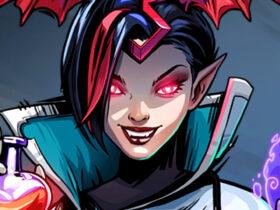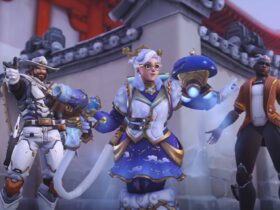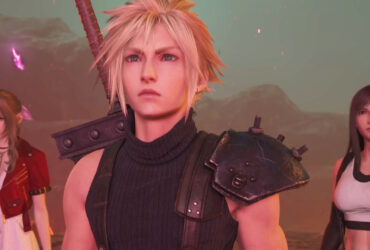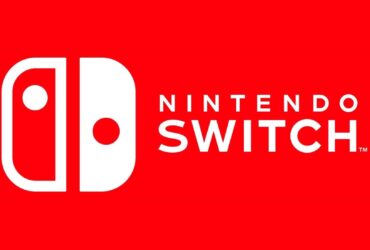You know, it probably isn’t great for my gnawing sense of panic about getting older to see more and more games from my childhood reaching 20 year anniversaries, but unfortunately time doesn’t give a hoot about that, and it’s a simple fact that The Legend of Zelda: The Minish Cap came out two decades ago now. Existential crisis aside, an anniversary like this is a great time to remember the Game Boy Advance classic, not just because it’s timely, but because we’ve almost certainly got a brand spanking new Nintendo console coming up, and there’s a lot the developer could learn from one of its best Zelda games.
The thing that’s a bit of a shame about The Minish Cap, is that not many people played it. If you ignore the HD port of Twilight Princess, it’s actually the third worst selling entry in the series, a point I was genuinely a bit surprised to learn when researching for this piece, but felt less surprised by when I realised it launched less than a month before the Nintendo DS came out – why get one of those old, stinky GBA games, when you could get Nintendogs?
To see this content please enable targeting cookies. Manage cookie settings
Because of those low sales, I think it becomes a bit of a forgotten Zelda title, despite being so delightful, but that also means that a lot of people don’t really realise how odd it is. Sure, it has the usual staples; a mute young hero named Link, a princess called Zelda that you have to rescue, and a companion that basically does all the talking for you, this time in the form of Ezlo, a talking hat (there’s obviously a bit more going on there, that’s spoiler territory though). There’s a couple big things missing though: Ganondorf and The Master Sword.
Now, to be clear, it’s not unique in that fact – there are other games that don’t feature the ole Dorf as a baddie, and where Link’s trusty blade doesn’t end up in his sheathe, but I think the thing The Minish Cap does best is really roll with those absences. For starters, there’s the main sword Link eventually acquires – The Four Sword, a weapon that lets the user split themselves in up to four copies, making for some fun puzzley moments which of course comes with a mix of limitations and bonuses.
That all gets neatly tied in with the story stuff about the titular Minish, and means the game is more than just going back and forth between your regular size and shrinking down to the size of a pin. But those moments are important and special too! There’s an incredible sense of scale to the game, with the pixel art helping to sell the developer’s vision so effectively. It’s a weird game that you couldn’t really do any other way but in 2D, except there is that one incredible Astro Bot level with a similar mechanic, so who knows.
Watch on YouTube
Those mechanics tying themselves so neatly to the story are what really makes the game shine though, and even if it isn’t particularly revelatory or lore expanding, it feels fresh even now because of how disconnected it is to everything else. That could be to do with the fact it’s actually a Capcom developed game, funnily enough, but it’s just so pleasantly weird.
There’s maybe even a lesson to be had there that Nintendo should open its doors to letting other developers handle the series occasionally, and not just the ones it has close ties to like Grezzo (who developed Echoes of Wisdom) either. Remember when an indie team made Cadence of Hyrule, a rhythm action game with a completely unique Zelda game? More of that please, Nintendo.
Echoes of Wisdom itself is a bit of a change of pace, one I wish went harder on those changes sometimes, but is clearly an experiment from Nintendo at the end of one of its most successful console runs ever at the end of its lifespan. I want that weirdness to come back even stronger on the Switch 2, so we get titles like Minish Cap again, that don’t feel beholden to all of the Zeldas that came before. And to be honest, I’d just like to see the Minish again too.
function appendFacebookPixels() { if (window.facebookPixelsDone) return; !function(f,b,e,v,n,t,s) {if(f.fbq)return;n=f.fbq=function(){n.callMethod? n.callMethod.apply(n,arguments):n.queue.push(arguments)}; if(!f._fbq)f._fbq=n;n.push=n;n.loaded=!0;n.version='2.0'; n.queue=[];t=b.createElement(e);t.async=!0; t.src=v;s=b.getElementsByTagName(e)[0]; s.parentNode.insertBefore(t,s)}(window, document,'script', 'https://connect.facebook.net/en_US/fbevents.js');
fbq('init', '1749355691872662');
fbq('track', 'PageView'); window.facebookPixelsDone = true;
window.dispatchEvent(new Event('BrockmanFacebookPixelsEnabled')); }
window.addEventListener('BrockmanTargetingCookiesAllowed', appendFacebookPixels);
Source link












Leave a Reply